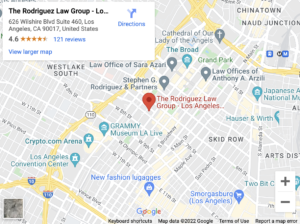Bail Reform Expands In California

Add Contra Costa County to the list of jurisdictions in the Golden State that have replaced the cash bail system with a tool that advocates claim is more reliable and fair.
According to one group, on any given day, at least 45,000 Californians are incarcerated not because they’ve been convicted of a crime but because they’re ineligible for pretrial release under the cash bail system. County officials in Contra Costa actually started an alternative pretrial release program in 2014, after a 2011’s Assembly Bill 109 and 2012’s Proposition 30 effectively shifted some inmates from state jails to county facilities. The county rates inmates’ riskiness on a scale of one to ten, and a judge sets bail based on that assessment. Typically, a very low score of one or two results in conditional pretrial release that doesn’t involve a money payment but may involve periodic check-ins, drug tests, and other stipulations.
About a third of assessed inmates qualify for noncash supervised release, and of that group, 90 percent appear at all their court dates and 96 percent do not re-offend.
Bail and Pretrial Release
As money is perhaps the most valuable commodity in this or any other society, cash security is a time-honored way to help ensure compliance with certain conditions or promises. However, this method has always come with prophylactic measures to guard against abuse. For example, in some ancient Middle Eastern societies, if a lender took a debtor’s cloak as security, the lender had to return the garment by sundown, because that coat may have been the only thing keeping the debtor from freezing at night.
There are those who claim that the current cash bail system lacks those protections. According to a recent Fed study, nearly half of Americans said they did not have the immediate resources to meet a $400 emergency. Many of these people said they could use a credit card, but many others said they would have to take more extreme measures, like borrowing from relatives or selling something, and not everyone has these kinds of options. As a result, a number of unsentenced inmates may not pose a threat to society or may not be flight risks, but the are nevertheless behind bars, largely for economic reasons.
Because of Proposition 47 in 2014, the local jail population is roughly back to its 2011 level, but that figure represents bout 90 percent of capacity.
Pretrial Release in Los Angeles County
LA County basically has a modified cash bail system. Legally, all inmates other than those facing capital charges are presumptively entitled to O.R. (own recognizance) supervised release, but cash-based release remains the primary option.
- Cash Bail: In Los Angeles, officials at the jail set an initial bail as part of the booking process; the amount is based solely on the severity of the charged offense, in most cases, so it is typically on the high side. If defendants deposit the entire amount with the county, they are released. Later, when their cases are resolved, the county refunds the full amount minus an administrative fee.
- Bail Bond: Since most Los Angeles families have little or no emergency resources, a $1,500 bail might as well be $15 million. Typically, a bail bond agent charges a 10 percent premium to secure the defendant’s release.
- O.R. Bond: Judges almost never grant O.R.. bonds without hearings, and these are examined below.
The cash bail system does consider one constitutional factor — the severity of the charged offense — but does not really account for the rest of them.
The Arraignment
In most cases, a judge reviews the charges and holds a hearing within two business days. At this hearing, the judge will consider reducing the bail amount or granting O.R. release based on a number of Eighth Amendment factors, including:
- Severity of the Offense: Constitutionally, there is a direct link between the seriousness of the charges and the defendant’s likelihood to remain and face trial; at the arraignment, the prosecutor will also lay out the state’s evidence against the defendant, and the judge often considers the strength of the evidence as well.
- Public Safety: Violent threats against witnesses or victims weight heavily in favor of pretrial detention; although DUI is normally associated with a threat to public safety, possible O.R. conditions, like ignition interlock devices, effectively eliminate this threat.
- Ties to the Community: Persons with local jobs and families are usually less likely to flee than persons with the means and will to travel.
If the judge determines, based on Eighth Amendment factors and the legal presumption, the the defendant is a candidate for O.R. release, a pretrial services investigation nearly always follows. This part is the good news/bad news in O.R. release. The good news is that there is no fee; the bad news is that an investigation takes time and may uncover things that the defendant would rather remain hidden. Moreover, since there is no financial security, O.R. conditions may be considerably more restrictive than bail bonds restrictions.
Pretrial release, and especially aggressive representation at the arraignment, is an important component of comprehensive representation. For a free consultation with an experienced criminal defense attorney in Los Angeles, contact The Rodriguez Law Group. Mr. Rodriguez is a former prosecutor.
To learn more, call our Los Angeles criminal defense law firm at 213-995-6767 or visit our contact us page to send us an email.


